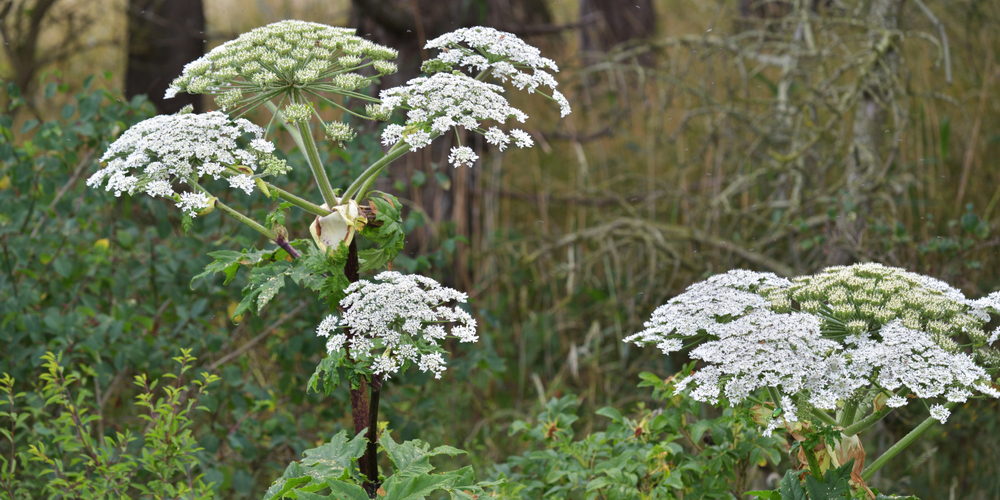In recent years, Giant Hogweed has been spotted in Indiana. Brought to the United States in the early 1900s, it was meant to be part of a garden in New York. Eventually, it spread and became a problem for humans and our non-invasive plants.
What Is Giant Hogweed?
Giant hogweed is an invasive and dangerous plant. This plant overcrowds non-invasive plants, and its sap causes burns to humans. It comes from the carrot family and is a large plant that can rapidly spread if we don’t stop it.
This plant is illegal to grow, move, or sell due to its dangerous and invasive nature.
This plant is such an issue because of the burn risk for humans when we come into it and the way it overcrowds non-invasive and native plants, leaving them no room to grow. This leads to no competition among the plants, letting giant hogweed spread and grow unchecked.
Identify Hogweed in Indiana
Giant hogweed gets its name from how large it is. It can grow around 14 feet tall with leaves that are 5 feet across. It has many flower heads that hold thousands of seeds. If you think you see giant hogweed, take caution. Some look-alikes also pose a health and safety hazard for us, so you should not touch a plant if you think it is hogweed.
Hogweed is giant with leaves that are 5 feet wide and multiple white flower heads. Its step is green with purple spots, and the stem has coarse, white hairs.
What To Do When You See Hogweed
Always take the utmost caution when dealing with giant hogweed. When the sap comes into contact with us and the sun, we can develop severe burns. This sap comes out of the plant when it is disturbed.
If you come into contact with the sap, seek medical help and clean the area, keeping it covered to protect it from the sun for a few days.
You should call local environmental services if you see any hogweed. Keep in mind there are similar plants that you can confuse for hogweed. No matter what plant it is, try to avoid touching it. Hogweed look-alikes are also dangerous when we come into contact with them.
How To Remove and Control Hogweed
If there is giant hogweed on your property, you can likely help control it yourself. There are a few methods that you can use, sometimes in conjunction with each other. These include removing it, using herbicides, and cutting the plants down.
When handling giant hogweed, always cover your skin and wear eye protection. This will lower your risk of touching the sap and sustaining burns afterward.
Removing Giant Hogweed Flowers
You can effectively stop the spread of this invasive plant by cutting off the flower heads with sharp pruning shears. Place these heads in trash bags and double bag them. If there is sap on the outside, triple bag them. Ensure that people cannot have exposure to the sap.
If you see seeds in the dirt, remove that, too. This will stop the plant from taking root.
Cut the Plants Down
Another way of preventing the spread and removing hogweed is to cut it. You can cut the roots and check in to ensure the plants are dying. You can cut the plants down to the ground and cover them with a tarp and mulch, and the plants will fully die within a year or two. Finally, you can mow over the hogweed multiple times a growing season. Eventually, this will eradicate the plants, though it may take a year or more.
If you cut the plants, ensure you remove the flower heads and dispose of them with the above method.
Herbicide
You can use herbicides in conjunction with cutting the plants down and removing the heads. This can help the other methods work more effectively, and it is effective on its own.
If You See Something, Say Something
Whether you deal with the hogweed or want a professional to do it, you should call in any sightings so that the areas can be monitored and plants tracked. And always remember to wear safety gear if you handle giant hogweed and other similar weeds such as hemlock.

